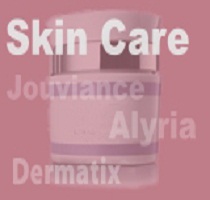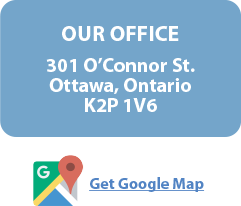Volume 9 • Issue 4
Cosmetic Enhancement in the Eyelid Area
Considerations and Possibilities

by David R. Jordan
M.D., F.A.C.S., F.R.C.S.(C)
INTRODUCTION
As one ages, the upper and lower lid skin stretches, muscles weaken and fat pockets bulge. Aesthetically, such conditions may detract from the overall attractiveness of ones eyes and cause a “tired” or “older” appearance. This situation bothers some individuals more than others, and at different ages. There are a number of ways one can improve the appearance of the eye area, including surgical as well as non-surgical options.
What Are The Possibilities?
-
Upper Eyelids – In a surgical procedure known as blepharoplasty, incisions are made in the natural fold of the eyelids to remove excess skin, muscle or fat. These incisions are then closed with very fine sutures so that, after healing, the surgical sites become virtually unnoticeable. This procedure relieves eyelid heaviness and unnecessary folds, leaving a smooth platform for makeup and a more youthful, energetic appearance.
-
Lower Eyelids – blepharoplasty is also used to correct bulges, puffiness and wrinkles associated with the lower eyelids. Here the incisions are made directly below the eyelashes to remove excess skin. If only fat and no skin needs to be removed, the incisions can be made just behind the lower eyelids in a procedure known as transconjunctival blepharoplasty.
-
Forehead Frown Lines – Vertical lines in the mid-forehead, usually called “frown lines”, can be eliminated or minimized through injection of minute quantities Botox™. Horizontal lines running across the forehead can also be treated in a similar fashion. Botox™ temporarily weakens the over-acting muscles that create these wrinkle lines for 3-9 months. A soft tissue filler such as Restylane is also beneficial to reduce the unwanted verticial lines between the eyebrows.
-
Crows Feet and Fine Wrinkles – Very fine lines and wrinkles in the eye area as well as other facial areas can be reduced through the use of special skin care treatments such as Kinerase, Retin-A, and topical Vitamin C. More pronounced wrinkles may require the skin to be resurfaced with a chemical peel or with a CO2 or Erbium laser to provide a softer, more youthful appearance. Botox™ is best to soften very expressive crows feet (those wrinkles located at the outside corners of each eyelid) as well as forehead frown lines as mentioned above.
-
Small Blood Vessels or Blemishes – variety of techniques, including laser or Ellman-radio frequency application.
-
Pigmentation – blotchy pigmentation in the eyelid, forehead and facial areas can be reduced or eliminated with the use of anti-pigment creams containing Kojic acid, hydroquinone as well as other naturally occurring plant products such as those found in Kinerase.
-
Eyebrows – Droopy brows may be elevated through a procedure known as an eyebrow or forehead lift. Small incisions are made directly above the eyebrows or within the forehead creases. In a coronal brow lift, the incision is made at or just behind the hairline. In the endoscopic technique, several small incisions are placed in the scalp and the entire forehead is lifted using an endoscope. Botox™ may also be used to raise the eyebrows in selected patients.
-
Sun Damage – The first step to treat photo damaged (sun damaged) skin is to stop the ongoing photo damage. It makes little sense to spend a lot of time and money to improve the quality of skin and then subject it to further damage from chronic ultraviolet (UV) light exposure. Your skin has the ability to repair itself if it is protected from continual damage. A sun blocker that protects from UVA (causes most of the aging and wrinkle changes) and UVB (causes skin cancer) is most beneficial. Most sun blocks have a rating for UVB protection but lack a rating for UVA protection. Study the label carefully or ask the pharmacist if there is UVA protection.
Skin damaged by the sun can be treated through the use of rejuvenative creams and lotions that minimize pigment spots and naturally thicken the skin to provide a more healthy and youthful appearance. A sun block started at any time in one’s life will help prevent further solar damage.
Cosmetic Eyelid Surgery – Should I Do It?
Removal of the excess skin and fat can restore a younger, more rested appearance but the surgery required is an individual decision. Patients should research the procedure through reading, internet, friends who have had it, as well as through consultation with a physician experienced in the field. It is important to then take some time and think over the advantages and disadvantages, risks, etc. The best time to consider cosmetic eyelid surgery is when the patient is truly ready and motivated to do it. It’s not a good idea if one is not sure, stressed out, going through a separation/divorce, or, experiencing another major life change. One shouldn’t feel outside pressure to have it.
Patient Expectations
Cosmetic eyelid surgery can remove some of the excess skin and fat and restore a more youthful and rested look. However, only so much tissue can be removed. It is important to leave enough skin behind to balance the rest of the face and most importantly allow proper eyelid closure. If the eyelids don’t close properly, eye irritation may occur which can be quite bothersome and lead to discomfort, tearing, photosensitivity, etc.
Choosing The Right Surgeon?
Eyelids are not the same. They are slightly different from person to person, race to race. One patient’s eyelids may require fat repositioning, while another patient may need fat resection, and a third may be in need of a special tightening effect of the lower eyelid. It is important to individualize the treatment plan for each particular patient’s needs.
Performing surgery in the area surrounding the eye requires a delicate hand, an artist’s vision and most importantly, extensive knowledge and specialized training. If you intend to see one or more surgeons before choosing one, there are questions you can ask to compare them. Examples:
What formal training have you had in cosmetic eyelid surgery
- a weekend course, a few cases as a resident?
- a formal, credentialed fellowship (usually 1 or 2 additional years), or other extended, advanced training in this area?
- A How long have you been performing cosmetic eyelid surgery?
- Are you credentialed by any recognized national organization?
- What are the complications of cosmetic eyelid surgery and are you trained to handle them or will you have to refer such complications to other physicians?
- If you need to refer, to whom do you send your patients?
For your information, Dr. Jordan served two additional years of fellowship training in Ophthalmic Plastic and Reconstructive Surgery with leading experts in the world in 1986 and 1987. This was after having fulfilled four years of medical school, a one-year internship and 3 years of residency training in Ophthalmology. Dr. Jordan has been performing cosmetic and reconstructive surgery in the eye region exclusively since 1986. He is credentiated by and is an active member of the American Society of Ophthalmic Plastic and Reconstructive Surgeons (ASOPRS) and is the only physician in the Ottawa area credentialed by this group.
Dr. Jordan will discuss with you all possible complications of your surgery. He is fully qualified to deal with any complications dealing with the eye or eyelid. Other surgeons routinely refer their eyelid complication cases to Dr. Jordan for management.
Tips For Successful Outcome:
1) Choose your surgeon carefully. Be sure he/she has lots of experience. Ideally they should have an additional training in the field of Ophthalmic Plastic and Reconstructive Surgery.
2) Review your concerns carefully with the surgeon and be sure the surgeon plans to individualize the surgery to your anatomy (i.e. not all eyelids are the same).
3) Follow post-op instructions carefully – give your body a chance to heal. Rest with ice packs in the first 48 hours is most important. If you are too active in the first few days, you may upset the healing process.
If you have any questions regarding the topics of this newsletter, or requests for future topics of InSight, please contact Dr. David R. Jordan office by telephone at (613) 563-3800.







